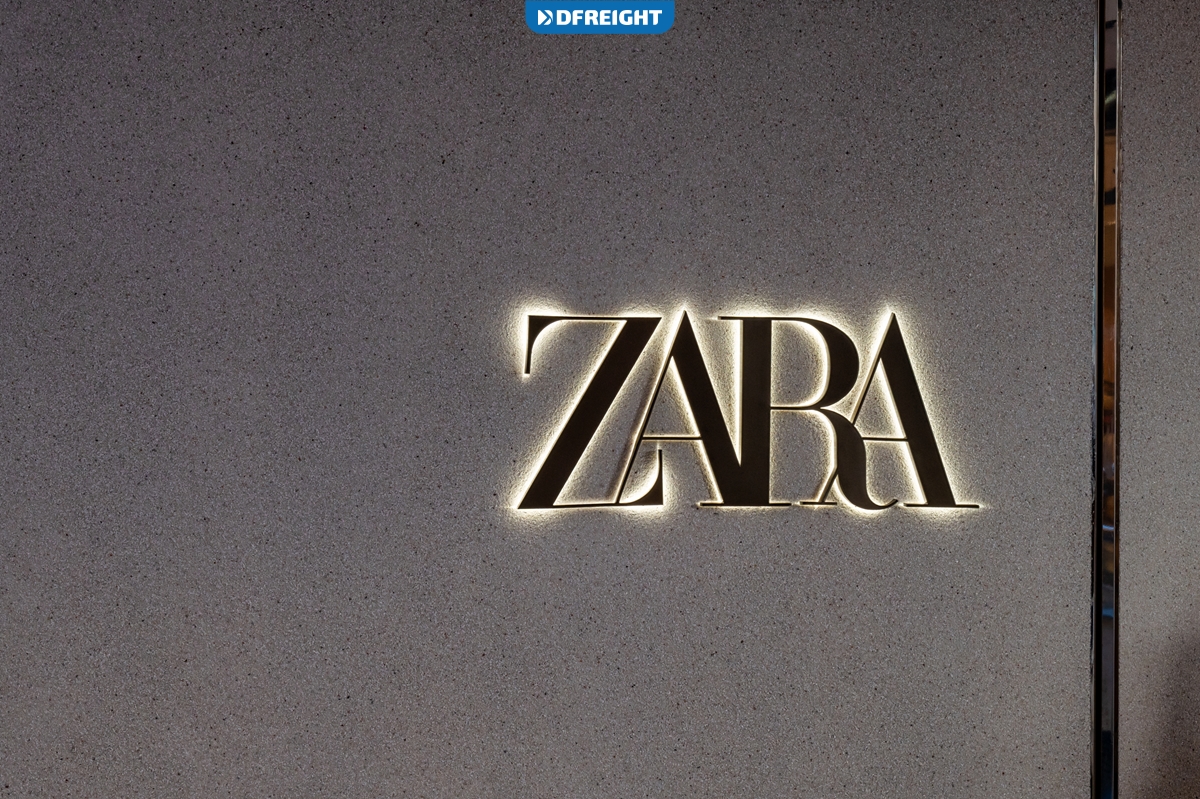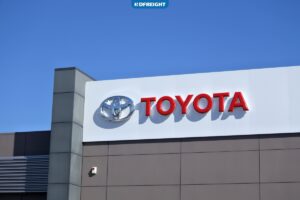The fashion industry is fast-paced and ever-evolving, so supply chain strategies need to keep up with the times to keep up with the competition. Zara, one of the top players in the fashion market, is continuously looking for new ways to enhance their supply chain to provide fast and easy access to fashionable products to their customers. Digital freight forwarder DFreight can assist with this process, providing quick, accurate, and dependable solutions to the fashion sector. With dynamic and ever-changing case-by-case services, DFreight is the right partner to help fashion brands remain competitive in an ever-increasing international market.
Read this article to learn more about how ZARA is leveraging supply chain strategies to remain the fashion industry leader.
Table of Contents
Zara’s Rise as a Fast Fashion Powerhouse
Zara, a Spanish fashion powerhouse, has revolutionized the fashion industry. With its fast fashion business model, Zara has become one of the world’s most powerful brands, providing customers with a wide selection of fashionable products at reasonable prices. Zara’s stores still offer seasonal pieces, but the company now provides online shopping for the international market.
With its innovative marketing, production, and logistics system, Zara is able to quickly refresh collections with new products and move merchandise from production to store shelves in record time. It has also focused on creating unique collaborations with designers and artists to appeal to a broader base of shoppers. Thanks to its combination of style, speed, and innovation, Zara has become one of the most talked-about names in fashion.

Understanding Zara’s Fast Fashion Model
Zara has revolutionized the fashion industry by successfully implementing its fast fashion model, allowing customers to stay on the cutting edge of fashion trends without requiring a hefty investment.
The Concept of Fast Fashion and its Significance
Fast fashion is the process of rapidly producing fashionable items to meet current trends and demands while delivering them quickly and cost-effectively. This allows customers to stay on the cutting edge of fashion at a fraction of the cost.
Zara’s Unique Approach to Fast Fashion and its Benefits
Zara has taken the concept of fast fashion to a new level by having two to three collections a season, enabling it to have the latest styles on the market faster than any other company. In addition, its supply chain strategy enables faster market speed, allowing them to bring items from design to stores in as little as four weeks. Furthermore, it allows for a high level of customization and leveraging of economies of scale, resulting in increased profitability.
How Zara’s Supply Chain Strategy Enables Rapid Production and Distribution
Zara’s supply chain strategy gives them greater control over its production process, allowing for faster speed to market that brings items from design to stores in as little as four weeks. Additionally, it allows for a high level of customization and leveraging of economies of scale, resulting in increased profitability.
In the previous blogs, we looked into the supply chains of famous and leading companies, which you can read about each of them in the section below.
| Amazon | H&M | Cisco |
| Adidas | BMW | KFC |
| Nike | Costco | L’Oréal |
| IKEA | Honda | Pepsi |
| Nestlé | Tesla | Apple |
| Coca-Cola | Intel | Starbucks |
| Samsung | Toyota | Walmart |
| ADNOC | Schneider Electric | Unilever |
The Role of Vertical Integration in Zara Supply Chain strategy
Zara’s vertically integrated business model has enabled the successful international fashion retailer to gain a competitive edge in the industry by reducing inventory costs, increasing production speed, and continuously offering customers the latest trends.
Exploring Zara’s Vertically Integrated Business Model
Zara’s vertically integrated business model is based on owning and controlling each element of the supply chain from production to the finished product. This includes producing raw materials, manufacturing, warehousing, distribution, advertising, retailing, and logistics. By taking control of the entire supply chain, Zara is able to reduce inventory costs, speed up the production process, and provide customers with constantly updated fashion trends that are on-trend with current styles.
The Advantages of Owning the Entire Supply Chain Process
With Zara’s vertically integrated business model, they are able to reap many advantages, including reduction of inventory costs, increased speed of production, and the ability to bring customers the latest trends, as well as price flexibility. With complete control of its supply chain, Zara is able to produce new styles faster than their competitors can and offer them at competitive prices. Furthermore, Zara is able to adjust production levels to better meet customer demand, thus saving money on inventory costs.
How Vertical Integration Contributes to Zara’s Speed and Flexibility
Vertical integration has enabled Zara to have a speed-to-market strategy, offering customers twice-weekly drops of new store items. Zara can provide customers with a constant flow of current fashion trends without worrying about inventory costs or long production times. Furthermore, vertical integration allows Zara to be flexible in their production – quickly adjust their factory output to meet customer demand. This combination of speed and flexibility will enable Zara to remain competitive in the ever-changing fashion industry.
Just-in-Time Manufacturing: Zara’s Agile Supply Chain
Just-in-time manufacturing is an efficient and cost-effective way of managing a supply chain. Zara’s supply chain incorporates this approach, allowing them to quickly produce and deliver small batches of clothes that respond to changing fashion trends and customer needs. While this approach provides many benefits, there can also be challenges associated with it.
An Explanation of the Just-in-Time Manufacturing Concept
Just-in-time (JIT) manufacturing is an efficient and cost-effective way of managing a supply chain. It is a management system involving the close coordination of procurement and production processes to produce the correct item, at the right quantity, at the right time, and in the right place to meet customer demand. This approach is based on the Japanese lean manufacturing concept of creating value with less waste by making needed items only when they are required and no more. The idea is to reduce inventory, streamline production, and improve resource utilization.
How Zara’s Supply Chain Incorporates Just-in-Time Manufacturing
Zara’s supply chain incorporates just-in-time manufacturing principles to improve efficiency. Zara is able to get clothes designed, manufactured, and delivered to stores within just two weeks. They use a network of manufacturers worldwide to produce and deliver the small batches that Zara orders quickly. This gives Zara an advantage over competitors with longer lead times, allowing them to respond rapidly to changing fashion trends and customer needs.
The Benefits and Challenges Associated with this Approach
Just-in-time manufacturing provides many benefits, such as reducing inventory costs and space requirements, streamlining production, and delivering a product that is exactly what customers want. However, it can also come with challenges, such as increased pressure on suppliers to meet tight production timelines and the need for strong communication between different parts of the supply chain to coordinate effectively. Additionally, there is always the risk that unexpected events, such as natural disasters or pandemics, could disrupt the supply chain.
Dynamic Inventory Management: The Secret Weapon
Dynamic inventory management helps retailers stay updated with the latest fashion trends, allowing them to maintain relevancy and profitability in the dynamic fashion industry.
Zara’s Dynamic Inventory Management System
Zara’s dynamic inventory management system is considered pioneering in the fashion industry. It allows Zara to respond quickly to the ever-changing fashion trends and demands of consumers. The quick turnaround helps Zara maintain relevance and profitability in the dynamic industry. The system provides real-time data and consumer behavior insights, enabling Zara to replicate and update consumer preferences. This allows Zara to keep up with the latest fashion trends and choose the right quantities and items to stock in their stores.
The Use of Real-Time Data and Consumer Insights
Real-time data and insights from consumers can be used to make informed decisions about product inventories. Retailers can plan ahead and optimize merchandise stocking by understanding consumer behavior, such as preferred trends, sizes, and colors. Utilizing this information also helps retailers identify potential risks regarding inventory. This helps retailers minimize wasted stock risk and decrease inventory costs.
Strategies for Efficiently Managing Inventory While Minimizing Waste
To successfully manage inventory, retailers need to adopt strategies that help minimize waste. One such strategy is to practice continuous inventory review. This ensures timely identification of slow or discontinued items that do not meet consumer demand or have become outdated. Another effective strategy is to focus on cyclicality. This involves forecasting demand for seasonal items and stocking them based on past sales data. This helps optimize stocking decisions and minimize the risk of wasting time or money on overstocking or understocking items.
Efficient Distribution Network: From Factory to Store
Zara has implemented advanced logistics and transportation strategies to optimize the speed and accuracy of product distribution for their customers worldwide. This allows them to ensure the timely arrival of products and keep up with ever-changing fashion trends. Through careful inventory management, shipments, and pacing, Zara can ensure that their customers get their orders quickly and accurately.
Additionally, they have gone to great lengths to reduce costs, driving their profitability. Through direct connection with suppliers and providing detailed logistics planning and oversight of the entire distribution process, they have been successful in achieving their goal of a reliable and efficiently managed worldwide supply chain network.

Sustainability in Zara’s Supply Chain Strategy
Zara has demonstrated its commitment to sustainability by implementing initiatives and strategies to reduce their environmental impact while offering fashionable and affordable products.
Zara’s Initiatives towards Sustainability and Ethical Sourcing
Zara is one of the largest fashion retailers in the world, and they have implemented a range of initiatives to promote sustainability and ethical sourcing in their supply chain strategy. These include utilizing organic fabrics and natural fibers, limiting the impact of harmful chemicals, and increasing the monitoring of ethical standards within the supply chain. With each new product release, they strive to reduce their environmental impact while still being able to offer their consumers fashionable and affordable products.
Balancing Fast Fashion with Environmental and Social Responsibility
Zara balances the need for fast fashion with environmental and social responsibility. They have put strategies in place to reduce the amount of water used in manufacturing processes while encouraging people to reduce their consumption of fast fashion by creating pieces that can withstand multiple trends, seasons, and occasions. Additionally, Zara incorporates fair wages and safer working conditions as a standard in their production process.
The Challenges and Future Prospects of Sustainable Fashion
While there has been a lot of progress towards green and sustainable fashion over the past few years, there are still many challenges ahead. Suppliers need help to keep up as the demand for ethical and sustainable products grows. Moreover, the production process from raw materials to finished products is complex. It often involves a long supply chain, which can be daunting to track and monitor for sustainable practices. Looking towards the future, companies are turning towards more transparent and efficient supply chains, as well as renewable materials and innovative technologies to reduce their environmental impact.
Implications for other Fashion Brands and the Industry as a Whole
For other fashion brands to remain competitive, they must take Zara’s lead and develop effective supply chain strategies. This involves creating a production system responsive to trends, investing heavily in research and design teams to create unique products, and utilizing agile forecasting. It’s important to note, however, that both Zara’s success and the strategies of other fashion brands may also be shaped by the emergence of technologies in the fashion supply chain—such as predictive analytics, robotics, blockchain, and artificial intelligence like chat GPT. As these technologies grow in sophistication, it will be essential for fashion brands to keep up with the changing landscape and adjust their supply chain strategies to remain competitive.
The Future Direction of Supply Chain Strategies in the Fashion Industry
Looking to the future, it’s clear that supply chain strategies in the fashion industry will need to keep pace with consumers’ rapidly changing consumer preferences. The challenge for fashion brands will be maintaining agility and flexibility while mitigating cost and risk. Zara’s success offers key lessons for the industry, and for fashion brands to succeed, they must learn from Zara’s example and leverage the same strategies to remain competitive.
Conclusion
Zara’s supply chain strategy is a valuable case study for businesses across industries. We have summarized the key takeaways and lessons that can be learned from Zara’s success, including the importance of agility, responsiveness, and customer-centricity in supply chain management. By understanding and applying these lessons, other companies can adapt and thrive in today’s rapidly changing business landscape.
What is Zara’s supply chain strategy?
Zara’s supply chain strategy is based on a vertical integration business model, where the company controls the entire production process, from design and manufacturing to distribution and retail. By having control over every aspect of the supply chain, Zara is able to quickly analyze trends, come out with new styles and get them into stores faster, enabling it to stay ahead in the fashion industry.
What makes Zara’s supply chain unique?
Zara’s supply chain is unique because it is built on a short, agile production cycle that allows them to keep up with fast fashion trends and respond quickly to changing market needs. From design to delivery, the process takes only a few weeks, enabling Zara to introduce new styles for its customers continuously.
How does Zara use technology to remain competitive?
Zara uses several innovative technological solutions to remain competitive. These include a barcode system for tracking and monitoring in-store inventory, RFID technology to track products in warehouses and stores, and AI-driven algorithms for forecasting sales and optimizing production. Zara has also implemented a cloud-based platform, allowing it to collaborate with its global suppliers easily.
How does Zara’s supply chain enable it to offer lower prices?
Zara’s vertical integration model and agile production cycle allow them to save time and money, which they can pass on to their customers. Additionally, due to the reduced lead times in their supply chain, Zara can minimize the costs associated with inventory and warehousing, resulting in lower customer prices.














